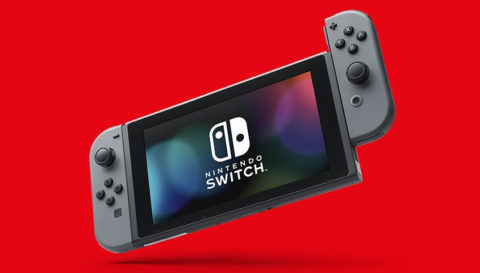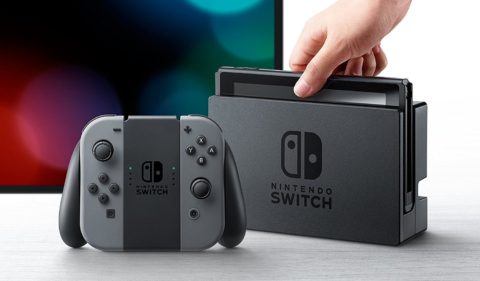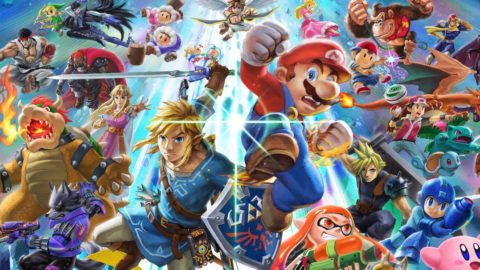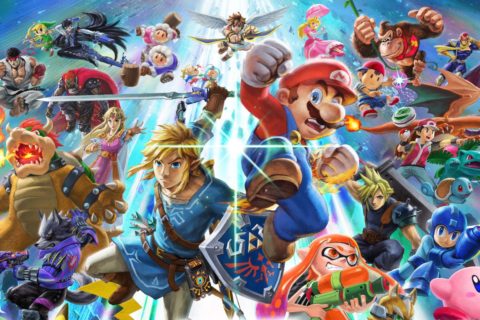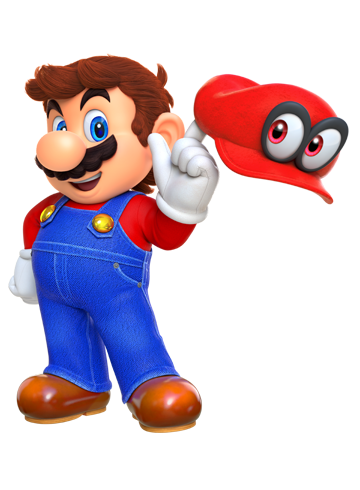Nintendo has released their Financial Q&A Report in English and they discussed several topics including Nintendo Labo, Nintendo Switch Online Service, including information regarding pricing for Nintendo hardware and games.
When asked about Nintendo Labo, its inspiration and Nintendo’s hope for the product, here’s what Shinya Takahashi, Ko Shiota, and Shigeru Miyamoto had to say:
Shinya Takahashi (Director, Managing Executive Officer):
When we first announced Nintendo Labo, a lot of people said it was a “very Nintendo” product. We are very thankful for that appreciation and support.
In our efforts to develop new forms of play, we at Nintendo always look to the integration of hardware and software. Nintendo Labo is just one of many projects under development, and it emerged from the idea of somehow setting the Nintendo Switch Joy-Con controllers, which can be considered a mass of sensors, into some form of attachment. I’m sure we surprised everyone with the use of cardboard, but it is not so far-fetched if you consider how familiar the material is at least to Japanese people who from a young age use it for play and as a material for creating things such as fancy crafts. Moreover, it was important to us that cardboard is a very suitable material for the trial-and-error process. When we started with a “robot” prototype inside the company, we realized that the trial-and-error process of attaining a finished product was itself extremely fun, in addition to playing with the product. That led to our concept for Nintendo Labo to be developed as something that people could enjoy in all of its aspects, not just in playing with the finished product, but also in making changes along the way and after it is complete, and in understanding the mechanics.
Ko Shiota (Director, Senior Executive Officer):
Joy-Con is designed as a controller which makes full-fledged gameplay possible, but at the same time, our goal as hardware developers with Joy-Con was to widen the possibilities of the controller. Using Joy-Con to the fullest has continued to be a consideration ever since Nintendo Switch was in development. As Mr. Takahashi noted, one idea was to set Joy-Con in some kind of attachment, and the result (of that kind of thinking about hardware and software in parallel) led to the inception of Nintendo Labo.
Shigeru Miyamoto (Representative Director, Fellow):
I, too, want to express my heartfelt thanks that people see this as a “very Nintendo” product. I read (on the Internet) somewhere that someone admired management for approving a product like Nintendo Labo, but inside Nintendo there are a lot of people who want to make products like that, and Nintendo is the kind of company that hires people who want to make products like that. In fact, when we asked inside the company for ideas for novel ways to use Joy-Con, we received many, many proposals, and one of them was to use cardboard like people did in the old days to make things. Nintendo is the kind of company that welcomes those kinds of new ideas.
The fact that it was perfectly natural for a product like Nintendo Labo to arise gives me reassurance that everyone inside the company understands and is committed to Nintendo as a company that innovates new ways to have fun and not as a company that only makes video games.
With the Nintendo Switch Online Service, arriving later this September, Nintendo promises that it’ll be worth the wait. Here’s what they had to say:
Tatsumi Kimishima (President and Representative Director):
We view the online service as one component of our efforts to diversify how our games are played and to get people to play more of our games. That is why we want to apply substantial resources to the online service, with the thinking that we will devote our energies to making this a for-pay service.
As for how we plan to popularize the service, it is less about the mechanism and more a question of what kinds of products we can offer, and the spread of the service will depend on whether consumers want what we offer. Please give us a bit more time to announce more details about the service. I think that announcement will convey to you how we plan to popularize the service.
We have some ideas about how to make Nintendo Switch Online appealing when it becomes a for-pay service, so I think our next announcement will be worth the wait.
Nintendo’s presence in China is very limited and the company is looking to expand their content there and they’re “consulting with various other parties on aspects we cannot tackle alone.” Tatsumi Kimishima mentioned.
Tatsumi Kimishima (President and Representative Director):
China has a huge population and I believe there are many people who want to enjoy the forms of play and games made by Nintendo, which is why we continue to study business opportunities even though our products are unavailable there at the present time. We would like to see the people of China also experience Nintendoʼs forms of play and games that people in other countries enjoy now. How best to achieve this is a subject we are working through point by point, consulting with various other parties on aspects we cannot tackle alone. I would like to realize this as quickly as possible, but there is nothing I can say at this time about activities that will start within the year.
Regarding the expansion of our smart-device business in China, it would be better to collaborate with local carriers rather than go it alone, but as of now there is nothing I can say on this topic either. That said, I hope that consumers in China in the future will be able to enjoy our games just like in other regions.
Since the launch of Nintendo Switch, Nintendo hopes each individual person will consider purchasing the system due to its portability, unique approach and use rather than each family owning one.
Shinya Takahashi (Director, Managing Executive Officer):
Nintendo Switch with its “anytime, anywhere, with anyone” concept is being used by people around the world in a variety of places, and all those various people are finding creative ways to facilitate their gameplay. In that sense, Nintendo Switch is being used in many unexpected ways, which is extremely pleasant for us. Up until now, there have been many alluring software titles for game enthusiasts. But the question going forward is how to convey the allure of Nintendo Switch to a wider range of age groups, regardless of gender. We introduced Nintendo Labo the other day as one way of addressing that issue. By creating an environment where parents and children can play together, and where children can play under adult supervision, we hope to gain even the interest of people like mothers. Going forward, I really want to convey the allure of Nintendo Switch to people in younger age groups and older age groups.
Ko Shiota (Director, Senior Executive Officer):
I also believe a major challenge will be to popularize Nintendo Switch among a broader consumer base. Consumers are utilizing the varied potential of Nintendo Switch and using the product in places and situations we never envisioned. From the standpoint of a Nintendo Switch hardware developer, I would love to continue with efforts to broaden the consumer base by leveraging the special features of Nintendo Switch to introduce new forms of play that integrate hardware and software, like the other day’s announcement of Nintendo Labo. We want to invent ways to squeeze as much play as possible out of Nintendo Switch.
Shigeru Miyamoto (Representative Director, Fellow):
In terms of corporate activity, there are a variety of risk factors, but if we can popularize Nintendo Switch among a broader consumer base I think most of the problems will be resolved. The marketing strategy going forward is to instill a desire to purchase Nintendo Switch among a wide consumer base in all the regions of Japan, the US, and Europe. Our ultimate ambition is for a Nintendo Switch to be owned not just by every family, but by every single person. The biggest attraction of Nintendo Switch is that the console can be carried around and used easily for competitive gameplay via local wireless connection. If consumers come to take it for granted that everybody has a Nintendo Switch, then we can create new and very Nintendo genres of play, and Nintendo Switch can have a life apart from smart devices and other video game systems. Expanding the Nintendo Switch world this way is a means of eliminating risk.
Nintendo’s thoughts on pricing for hardware and software:
Tatsumi Kimishima (President and Representative Director):
Nintendo develops products that integrate hardware and software with the goal of providing consumers with a fun experience. Because our central mission is to provide our consumers with a fun experience, it is important not only that a product look interesting, but that we consider the kinds of interesting experiences that people can have with the product. When you consider the hardware that can provide a certain experience, I expect people look at a Nintendo product and figure it is priced the way it is because it is a Nintendo product. But for us, because we are conducting a business, we do not want to sell the hardware at a loss. When we price hardware, we consider a price range that will not create a loss and which consumers will consider fair value and Nintendo-esque.
The same goes for software, which we develop so our consumers can have fun. Whether in package form or download form, we are providing software that is fun to play, so it is important that the software contain content of value, and that the value of the content not vary even if the way it is provided changes. That same thinking forms the basis to our pricing decisions.
Shigeru Miyamoto (Representative Director, Fellow):
We are a company that treasures ideas, so we are always mindful of providing the highest possible value-added products.
Lastly, Nintendo addressed the future of Nintendo 3DS and it’s tech:
Tatsumi Kimishima (President and Representative Director):
Nintendo 3DS continues to sell, so for now we hope consumers will embrace it together with Nintendo Switch. But as for what transpires in the future, that is uncharted territory.
Ko Shiota (Director, Senior Executive Officer):
From a technology standpoint, home console game systems, handheld game systems, and a system like Nintendo Switch that is a dedicated video game platform with aspects of a handheld, all use different kinds of computers and memory. The required technologies differ, depending on whether the emphasis is on power consumption, performance, or a balance of the two. Regarding development, we have not yet decided which direction to steer towards, but we have a variety of possibilities under consideration. The technologies that would be required (for platform development) include some that could take an extremely long time to develop and are ever-evolving, so instead of narrowing down the technologies we are widening the search. Once we have decided on the direction for (future) platforms inside the company, we will quickly begin preparations to track the (key) technologies.
With Nintendo’s continued success for Nintendo Switch, Nintendo 3DS, and the upcoming Nintendo Labo, we can only foresee more exciting games and announcement for the future. For all things, Nintendo, Stay tuned to NinMobileNews!
